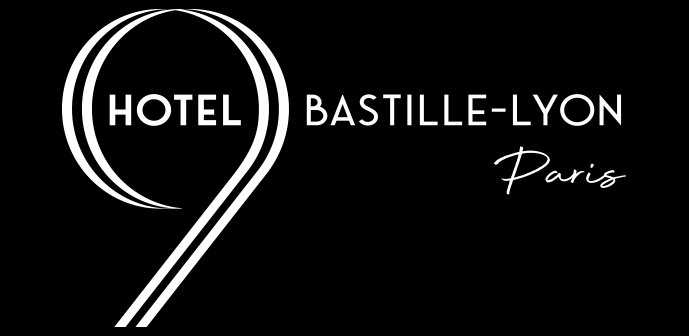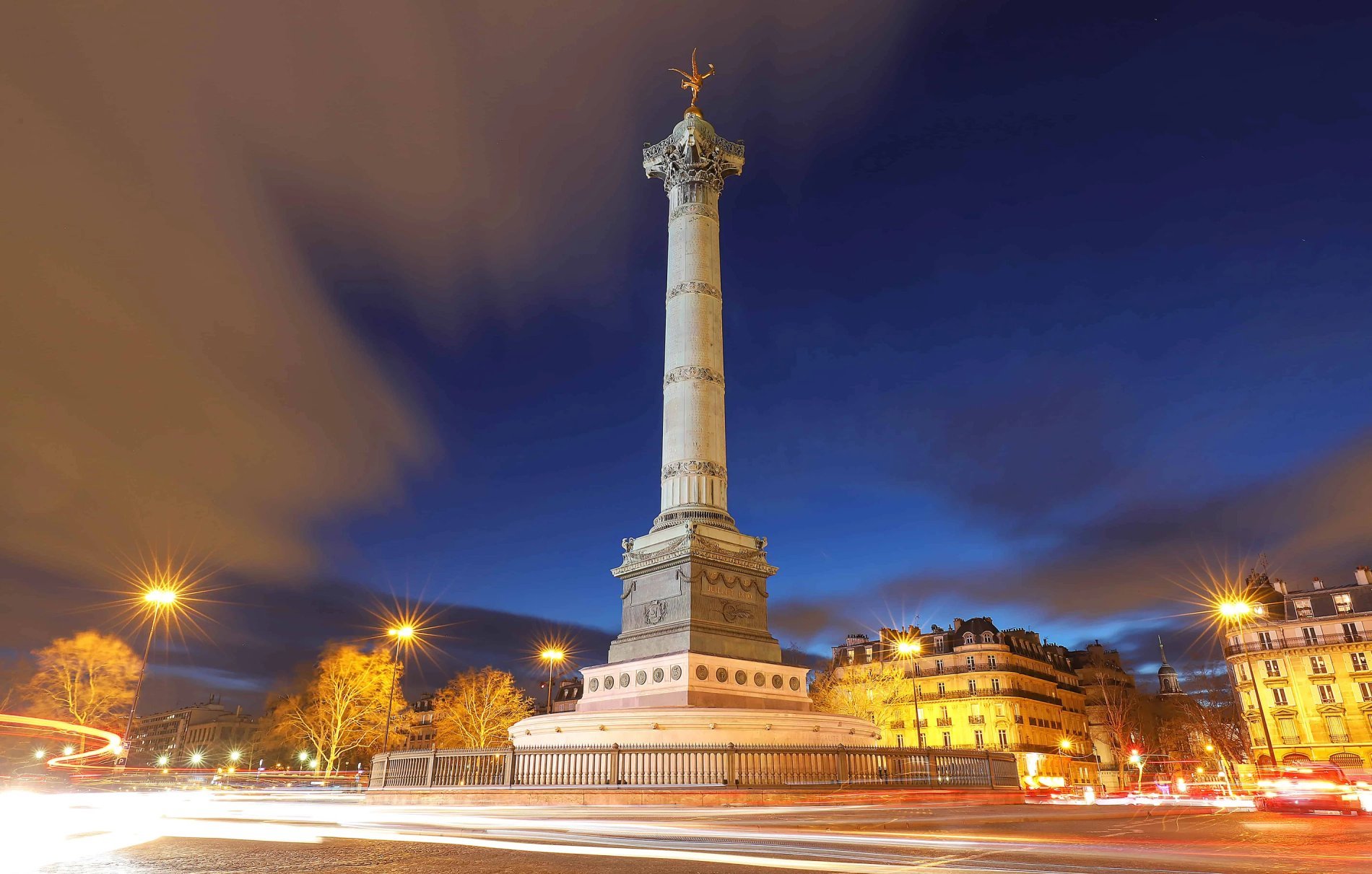Place de la Bastille
At the Eastern Edge of the Marais, Place de la Bastille Is One of Paris's Most Iconic Landmarks
Deeply rooted in French history, Place de la Bastille is a symbolic heart of the city. This square, which has undergone many transformations—from medieval fortifications to the construction of the July Column, and more recently, pedestrian and green space enhancements—has always remained a focal point of Parisian life. Inextricably linked to the French Revolution, it has hosted the country’s most significant social movements over the past 250 years. Our hotel offers a privileged stay in this historic yet ever-vibrant part of Paris.
Place de la Bastille, a Site of National Memory
For the French—and many others—Bastille is synonymous with revolution. It was here, on July 14, 1789, that the people of the Faubourg Saint-Antoine stormed the former fortress-turned-state prison. Though few prisoners were held inside, the act put an end to the notorious lettres de cachet, which allowed the king to imprison anyone at will. The symbolic power of the event was enormous, and the Bastille fortress was swiftly demolished.
One year later, on July 14, 1790, the first popular ball was held here—a tradition that continues to this day.
A Central Square at the Heart of Paris
Due to its strategic location, Place de la Bastille—once known as Bastille Saint-Antoine—has long played an important role in Paris. Originally a fortress built by King Charles V at the Saint-Antoine Gate, it served to protect the city’s eastern ramparts, not far from Château de Vincennes, the largest royal fortress in France.
Today, Bastille marks the entrance to the Marais, one of the most authentic and fashionable districts in Paris. It is only a few minutes from the stunning Place des Vosges and also sits at the end of the Canal Saint-Martin, which continues from the Arsenal Port, just steps from our hotel.
From Fortress to Opéra Bastille
Nothing remains of the original 1370 fortress—it was completely demolished during the Revolution. Several projects were proposed for the site, beginning in 1792, when it was to become the Place de la Liberté with a grand column at its center. In the end, only a fountain was built in 1793, which was soon replaced by a guillotine during the Reign of Terror before being relocated to Place de la Nation.
In 1808, Napoleon envisioned a giant elephant monument here—meant to rival the Arc de Triomphe and cast from cannons captured in battle. The 24-meter bronze elephant was never completed.
Eventually, the July Column was erected in 1831 under King Louis-Philippe, in memory of the 1830 Revolution, and remains the square’s most recognizable landmark.
The Opéra Bastille, inaugurated in 1989 during the Bicentennial of the French Revolution, is another iconic feature of the square. Built on the site of the former Paris-Bastille train station, it is now the second-largest opera house in the city after Opéra Garnier, and one of the most prominent in the world for its capacity and acoustics.
A Hotel in Trendy, Historic Paris
The July Column, commemorating the 1830 Revolution and standing on the original site of the Bastille prison, can now be visited. Inside, you’ll find a unique underground view of the canal waters flowing beneath—a hidden experience that even many Parisians don’t know about.
The square is currently undergoing major renovations to make it more welcoming and accessible. Plans include a large pedestrian island over one hectare in size, expanded green spaces, and urban furniture designed for relaxing and socializing.
In Paris, everything moves fast—and so do the transformations. The location of our hotel, just minutes from Place de la Bastille, is ideal for discovering historic Paris, vibrant nightlife, and the city's artistic and cultural scenes. Just a short walk from the Cité de la Mode, the Bastille district borders the Marais and 11th arrondissement, famous for its terraces, lively music and art culture, and frequent public events.


